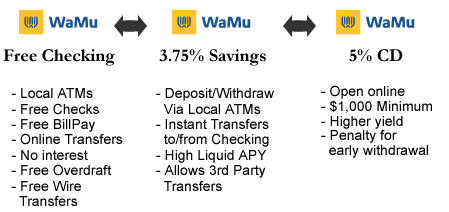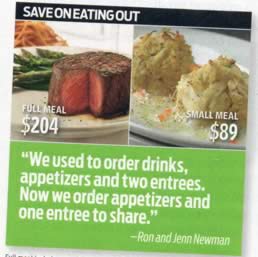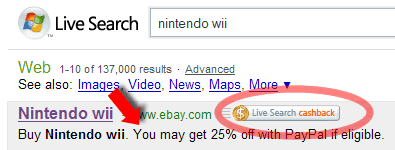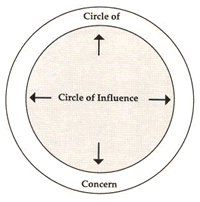 If have to repeatedly have to make a calculation and I can’t find it elsewhere to my liking, I usually try and make my own calculator to save time in the future. Below are links to ones that I still use regularly, I wanted to point them out because they tend to get lost in my archives. Hopefully, they can be useful to you as well.
If have to repeatedly have to make a calculation and I can’t find it elsewhere to my liking, I usually try and make my own calculator to save time in the future. Below are links to ones that I still use regularly, I wanted to point them out because they tend to get lost in my archives. Hopefully, they can be useful to you as well.
Ultimate Interest Rate Chaser Calculator
A “rate chaser” is someone who move their money to whichever bank offers the highest interest rates. For example, due to various promotions I have over 10 accounts open at various online banks. This calculator helps you figure out how much money you’ll earn by switching.
True Cost of Impulse Buying Calculator
Being smart with money is all about choices and priorities. Would you rather have another $300 iPod, or realize that with compound interest you could have an $2,000 more (inflation-adjusted!) later on. You’re not just saving $300, you’re shaving weeks off your retirement date!
Your Portfolio’s Rate of Return – Estimation Calculator
When trying to figure out your portfolio’s performance, don’t just trust the performance stats of your mutual fund or that number on your statement. Calculate it independently using this simple calculator. It gives surprisingly good estimates.
Your Portfolio’s Rate of Return – Exact Calculator
Slightly more complicated to use, but more accurate. You must know the dates and corresponding amounts of cash inflows and outflows.
Asset Allocation Guide: Percentage Of Your Portfolio In Stocks?
The calculator at the bottom shows you how your stocks/bonds ratio might look if you use popular Target Date mutual funds as a reference.
0% Balance Transfer Profit Calculator Tool
My series of articles on How To Make “Free” Money From 0% APR Balance Transfers has been very popular and many readers have also jumped in. Despite the risks, I’m still happily earning some money from the credit card companies for a change, and haven’t missed any payments.
This calculator is for the analytical types that want to have a better idea of profit potentials. The calculator takes into account minimum payments required by credit card issuers. Use in conjunction with my list of best 0% APR balance transfer offers.
 WaMu has rolled out a new 5% APY 12-month CD, which is a very high yield for that term length. Yes, WaMu has had some issues like other banks, but I’ve already explained
WaMu has rolled out a new 5% APY 12-month CD, which is a very high yield for that term length. Yes, WaMu has had some issues like other banks, but I’ve already explained 

 Have you heard of the Olympics Hangover? It’s when you stay up way too late watching “just one more event” and end up being red-eyed and unproductive the next day. So to counteract this, I used the public library for the first time in a long while. Funny thing: childless friends and co-workers had no idea where the library was. Only the parents did, since their kids use them. Why do we stop using the library as we grow older?
Have you heard of the Olympics Hangover? It’s when you stay up way too late watching “just one more event” and end up being red-eyed and unproductive the next day. So to counteract this, I used the public library for the first time in a long while. Funny thing: childless friends and co-workers had no idea where the library was. Only the parents did, since their kids use them. Why do we stop using the library as we grow older?


 It’s not every day that you get to interview someone who:
It’s not every day that you get to interview someone who: In an effort at personal development, I am currently reading the long-time bestseller
In an effort at personal development, I am currently reading the long-time bestseller 

 The Best Credit Card Bonus Offers – May 2024
The Best Credit Card Bonus Offers – May 2024 Big List of Free Stocks from Brokerage Apps
Big List of Free Stocks from Brokerage Apps Best Interest Rates on Cash - May 2024
Best Interest Rates on Cash - May 2024 Free Credit Scores x 3 + Free Credit Monitoring
Free Credit Scores x 3 + Free Credit Monitoring Best No Fee 0% APR Balance Transfer Offers
Best No Fee 0% APR Balance Transfer Offers Little-Known Cellular Data Plans That Can Save Big Money
Little-Known Cellular Data Plans That Can Save Big Money How To Haggle Your Cable or Direct TV Bill
How To Haggle Your Cable or Direct TV Bill Big List of Free Consumer Data Reports (Credit, Rent, Work)
Big List of Free Consumer Data Reports (Credit, Rent, Work)